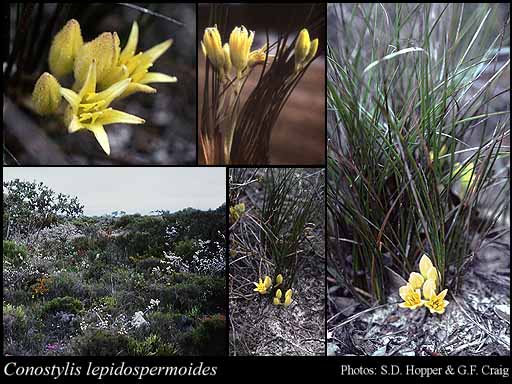- Reference
- Fl.Australia 45:461 (1987)
- Conservation Code
-
Threatened
A taxon name retains its ‘Threatened’ status until a new name has been officially endorsed and appears in the Gazettal Notice.
- Naturalised Status
- Native to Western Australia
- Name Status
- Current
Rhizomatous, tufted perennial, grass-like or herb, 0.17-0.36 m high. Fl. yellow, Sep to Oct. Grey or yellow-brown sand over laterite.

Scientific Description
Leaves flat, 110-210 mm long, 0.7-1 mm wide; bristles or hairs on the leaf margin present, 0.2 mm long, with at least some small side branches at the base, straight and rigid, lying parallel with the margin; hairs on the surface of the leaf present. Scape present, hairy, 65-80 mm long. Inflorescence subtended by a bract 4-5 mm long, with several flowers; floral bracts 2.5-3.5 mm long; pedicels present, 6-10 mm long; flowers 13-20 mm long. Perianth hairy, radially symmetrical, uniformly coloured, yellow, with six more or less equal tepals, the inner segments 6.5-10 mm long. Stamens six, in one level; filaments 0.7-1 mm long; anther 5-7.2 mm long, without an appendage. Style 6.5-10 mm long. Flowers in September or October. Occurs in the Mallee and Esperance IBRA bioregion(s), of the South-west Botanical Province. Conservation Code Threatened (T).
Distribution
- IBRA Regions
- Esperance Plains, Mallee.
- IBRA Subregions
- Eastern Mallee, Fitzgerald, Recherche, Western Mallee.
- Local Government Areas (LGAs)
- Dundas, Esperance, Lake Grace, Ravensthorpe.